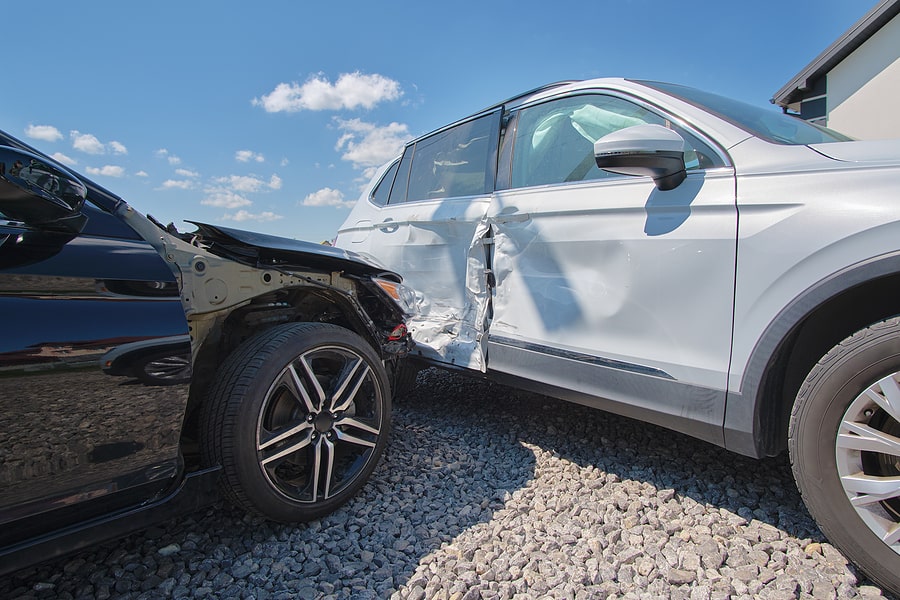Every state has a time limit for car accident injury claims. New York’s statute of limitations gives accident victims three years to file a lawsuit after getting injured in a car accident. If you file a lawsuit after the time expires, you must show that your claim fits into an exception to the statute. Judges must dismiss any late filings by a crash victim without an excuse.
These excuses pause or toll the running of this time limit. As a result, you can file your lawsuit after time would have otherwise run out.
At the same time, New York also has several exceptions to the rule that shorten your period to file. These rules apply to car accidents involving the state, county, or city. Claims involving these entities, including the transit services they operate, get handled under a completely different process.
Read on to learn about the statute of limitations in a New York car accident claim and why you may need a car accident attorney to help you calculate and meet your time limit.
How the Time Limits Work
Statutes of limitations provide certainty. People and businesses know that the only actions that could trigger a lawsuit happened relatively recently.
In the case of a car accident, New York’s statute gives three years to file a lawsuit. Drivers and insurance companies know they can only get sued for a car accident that happened in the past three years. This allows insurers to gauge the level of exposure they have to potential lawsuits against their policyholders.
This also means that injured car accident victims can inadvertently lose their right to sue for their injuries. Three years might seem like a long time. But after you suffer a serious injury, you can easily lose track of time while focusing on your health. Legal experts often recommend that you meet with a car accident lawyer quickly after a crash to avoid missing the deadline.
The other complicating factor is New York’s no-fault insurance system. If you registered your car in New York, you receive benefits under the no-fault auto insurance policy coverage after a crash. Some accident victims rely on this compensation to get through their injuries. And this insurance coverage is reasonably generous in New York.
New York’s basic no-fault coverage has a $50,000 policy limit. You can get up to $50,000 in medical and disability benefits without pursuing a claim against the at-fault driver. Some accident victims do not realize they need the additional compensation a lawsuit could provide until after the deadline has passed.
Some accident victims also feel that an insurance claim or lawsuit against the at-fault driver is not worth the effort. But you can seek additional compensation through an injury claim that you cannot get from your no-fault coverage.
Commencing the Period

According to New York law, limitation periods start when the cause of action accrued. In other words, the period starts on the day of your accident. For example, if you are injured today, this is when you know you have a legal claim that you could pursue in the courts.
Even if you first use your no-fault benefits, your limitations period still starts on your accident date. Suppose that your no-fault insurance pays for a year’s medical treatment and wage loss. When your no-fault benefits run out a year after your crash, only two years remain to file a lawsuit against the at-fault driver.
You may have heard of the discovery rule for some claims. Under this rule, the period begins when you discover your injury rather than the day your injury occurred. This rule applies to some claims, like injuries from toxic substances exposure, but not to all claims.
The limit for car accident injuries rarely uses the discovery rule. Even if you suffer a hidden or undiscovered injury, you should assume that your limitations period begins from the date of your car crash.
The law allows a judge to toll the statute in a few situations that might apply to brain injuries or psychiatric disorders that prevent the discovery of your claim. But New York has strict laws and exceptions, so you should always begin counting from the accident date.
Ending the Period
The period ends on the third anniversary of your accident. This deadline applies even if the period spans a leap year. Thus, if your accident happened on December 15, 2020, your deadline falls on December 15, 2023.
If you need to file a lawsuit, you must file it on or before this date. Filing an insurance claim will not pause the limitations period from running. If you file an insurance claim before the deadline, you still need to file a lawsuit before the time runs out.
Negotiations with the insurer or the at-fault driver will not toll the limitations period. Likewise, starting some form of alternative dispute resolution, such as arbitration or mediation, will not pause it. Even if you think you have a settlement, you and your car accident attorney will file a lawsuit before the deadline. You can then continue negotiating.
An at-fault driver or insurance company can waive the limitations defense. In other words, even if the period has run, the negligent driver and their insurer can lose this defense if they fail to assert it. A waiver often happens inadvertently when a sloppy insurance defense lawyer forgets the filing and accident dates.
It can also happen deliberately. An insurance lawyer can agree to waive the limitations defense.
But keep in mind that:
- These waivers are rare since most insurance lawyers want to preserve the limitations defense
- A limitations waiver might not be enforceable, depending on how it happened
In sum, you should always assume the limitations period will end on the third anniversary of your accident. If you get a different deadline, consider it a bonus, but you should not rely on any deadline other than the third anniversary.
Exceptions to the Statute
The limitations statute has several exceptions. Some of these exceptions extend your period to file a lawsuit, and they usually apply where some unfairness would result from a strict application of the limitation period.
But remember:
- New York law only allows judges to toll the limitations period in specific circumstances
- Judges must apply exceptions very narrowly
As a result, you should contact a car accident lawyer when an exception to the statute might apply to your situation. The car accident lawyer often recommends filing a lawsuit as soon as possible.
The lawsuit will meet the deadline if the period has not yet expired. If the deadline has passed, the lawsuit might help you show the diligence necessary to meet an exception to the statute.
Events that Toll the Running of the Period
New York has several exceptions to the limitations law that can pause or extend the running of the period. Some grounds for tolling the statute include the following:
Infancy
If the accident victim was under 18 when the accident happened, the limitations period starts when the victim turns 18. Thus, if your 12-year-old child was injured by a negligent driver while riding in your car, the three-year period starts on the child’s 18th birthday, and the deadline for filing the lawsuit falls on their 21st birthday.
Insanity
New York pauses the limitations period if the accident victim suffers from insanity.
New York’s statute does not define insanity, but the courts have construed this term to only include mental or psychiatric disorders that cause an overall inability to function, which can cover such situations as:
- Coma
- Post-traumatic stress disorder
- Intellectual disability
- Mental illness
- Dementia
The accident victim’s mental condition must have rendered them incapable of protecting their legal rights to qualify for the insanity exception. Any periods of lucidity or rationality might disqualify them from the insanity exception.
More importantly, the insanity exception has two important limits. First, the exception ends and the limitations period begins when the accident victim regains their mental abilities.
So if you were in a coma for two months after your accident before regaining consciousness, you only get an extra two months to file your claim. The at-fault driver can move to dismiss a lawsuit filed three years, two months, and one day after the accident.
Second, the exception has a ten-year cap. If the accident victim never regains their mental state, the deadline falls on the tenth anniversary of the accident. Thus, suppose an accident victim suffers permanent brain damage that causes a severe intellectual disability. A car accident attorney acting on behalf of the accident victim or their guardian must file a lawsuit within ten years after the crash.
Dodging Service
If the at-fault party deliberately hides from your lawsuit, the limitations period gets tolled.
To use this exception, one of two events must have happened:
- The at-fault party moved from the state
- The at-fault party lived in New York under a false name
Any other actions to dodge service, such as moving to a new address within New York under their real name, will not toll the limitation period. This means you may need to hire a private investigator to prove you cannot find them.
If you find the at-fault driver, the statute restarts. Only the time they were missing gets excluded from the period.
Death of Either Party
If the at-fault driver dies, you have eighteen months after the death to bring an action against the estate or the executor. If the accident victim dies, a car accident lawyer acting on behalf of the deceased person’s estate or executor must file a lawsuit within one year of the death.
These periods replace the limitations period. Thus, if the accident victim died in the crash, the estate has one year after the crash to bring the car accident claim rather than three years. This is an important limitation to watch for after a fatal car accident.
But bear in mind that the parties do not need to die from their crash injuries for the exception to apply. These periods get imposed even if the at-fault driver or accident victim dies of a cause unrelated to the car accident, like a heart attack.
The replacement periods only apply if the at-fault driver or accident victim dies during the regular three-year window. If they die after the deadline passes, their death will not reopen the window for an additional year.
For example, if the accident victim died two years and eleven months after a crash, the estate gets another year to file. But if the accident victim died three years and one month after a crash, the claim is lost forever.
Criminal Offense
If you get injured due to someone else’s criminal actions, you have ten years to file a lawsuit against them. This applies in very narrow situations like drunk driving or reckless driving, where the driver was convicted of injuring you.
Actions with Shorter Periods

New York also shortens the period to file in certain situations. The most common situation happens when you have a claim against the State of New York, a New York county, or a city in New York. Under this exception, you must file a notice of claim with the corresponding jurisdiction within 90 days after your accident and file a lawsuit within one year and 90 days after your accident.
This means you must contact a car accident attorney and begin filing paperwork immediately after your crash.
The crashes that could fall under this category include negligent driving by:
- Municipal and school bus drivers
- On-duty police officers
- Government employees who were on the job at the time of the crash
If your crash involved a government employee, you should contact a car accident lawyer as soon as possible to avoid losing your injury claim.
The Role of a Car Accident Lawyer
A car accident attorney will be very conscious about deadlines in your case. When you consult a lawyer, you should raise any issues involving statutes of limitations if the lawyer does not. You and your personal injury lawyer must have a clear plan to meet any impending deadlines or explain any delays in filing.
If you have any questions about the time limits that apply to your car crash claim, call an experienced personal injury attorney.



